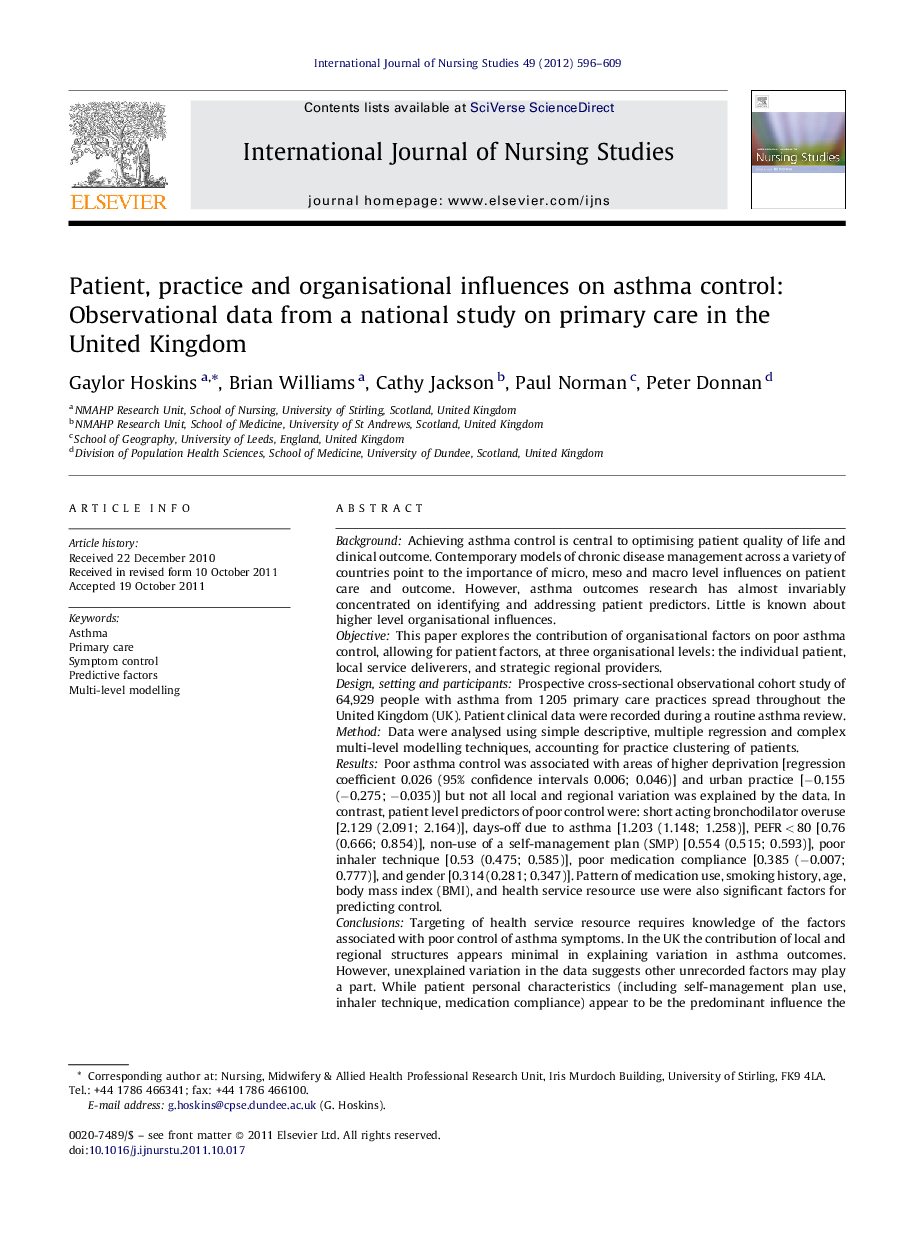| کد مقاله | کد نشریه | سال انتشار | مقاله انگلیسی | نسخه تمام متن |
|---|---|---|---|---|
| 1076469 | 1486560 | 2012 | 14 صفحه PDF | دانلود رایگان |

BackgroundAchieving asthma control is central to optimising patient quality of life and clinical outcome. Contemporary models of chronic disease management across a variety of countries point to the importance of micro, meso and macro level influences on patient care and outcome. However, asthma outcomes research has almost invariably concentrated on identifying and addressing patient predictors. Little is known about higher level organisational influences.ObjectiveThis paper explores the contribution of organisational factors on poor asthma control, allowing for patient factors, at three organisational levels: the individual patient, local service deliverers, and strategic regional providers.Design, setting and participantsProspective cross-sectional observational cohort study of 64,929 people with asthma from 1205 primary care practices spread throughout the United Kingdom (UK). Patient clinical data were recorded during a routine asthma review.MethodData were analysed using simple descriptive, multiple regression and complex multi-level modelling techniques, accounting for practice clustering of patients.ResultsPoor asthma control was associated with areas of higher deprivation [regression coefficient 0.026 (95% confidence intervals 0.006; 0.046)] and urban practice [−0.155 (−0.275; −0.035)] but not all local and regional variation was explained by the data. In contrast, patient level predictors of poor control were: short acting bronchodilator overuse [2.129 (2.091; 2.164)], days-off due to asthma [1.203 (1.148; 1.258)], PEFR < 80 [0.76 (0.666; 0.854)], non-use of a self-management plan (SMP) [0.554 (0.515; 0.593)], poor inhaler technique [0.53 (0.475; 0.585)], poor medication compliance [0.385 (−0.007; 0.777)], and gender [0.314 (0.281; 0.347)]. Pattern of medication use, smoking history, age, body mass index (BMI), and health service resource use were also significant factors for predicting control.ConclusionsTargeting of health service resource requires knowledge of the factors associated with poor control of asthma symptoms. In the UK the contribution of local and regional structures appears minimal in explaining variation in asthma outcomes. However, unexplained variation in the data suggests other unrecorded factors may play a part. While patient personal characteristics (including self-management plan use, inhaler technique, medication compliance) appear to be the predominant influence the complex nature of the disease means that some, perhaps more subtle, influences are affecting the variability at all levels and this variance needs to be explored. Further research in other international contexts is required to identify the likely applicability of these findings to other health care systems.
Journal: International Journal of Nursing Studies - Volume 49, Issue 5, May 2012, Pages 596–609